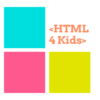Lesson 1
- Double click the ‘Notepad++’ icon on your desktop. You should now see a blank page
- Type the following code:
<head>
<title>My Name is</title>
</head>
<body> Hello World </body>
</html>
Remember: Each tag you open <tag> must be closed </tag>
- Click ‘File’, ‘Save As’ – A pop up will now appear
- Choose where you wish to save your file. (Remember this location)
- In the ‘Filename’ box at the bottom name your file ‘index’.
- From the ‘Save as type’ box, click the drop-down and choose ‘HyperText Markup Language file’ – this is about halfway down.
Test Your First Page
Now we will test your first HTML page.
- Click the ‘Run’ menu and choose ‘Launch in IE’. Your page will now be displayed and look like this:
Note how Internet Explorer has translated the tags and displayed only ‘Hello World’ and your name on the page.
Close ‘Internet Explorer’ and go back to ‘NotePad ++’.
We will now increase the size of the ‘Hello World’ text using ‘H’ tags. To do this:
- Change the ‘Hello World’ line, so it looks as follows
<h1>Hello World</h1> - Now save your file by clicking the blue ‘Disk’ icon.
Now rerun your page.
- Click the ‘Run’ menu and choose ‘Launch in IE’.
Try This
What happens to the ‘Hello World’ text when you add the <h1> tag?
If you have time, try the following:
- Change the ‘Hello World’ line, so it looks as follows
<h1>Hello World</h1>
<h2>Hello World</h2>
<h3>Hello World</h3>
<h4>Hello World</h4>
<h5>Hello World</h5>
- Now save your file by clicking the blue ‘Disk’ icon.
- Click the ‘Run’ menu and choose ‘Launch in IE’.
Common Tags
Some of the available tags:
| Tag | Description |
| <a> | Defines an anchor |
| <b> | Define bold text |
| <blockquote> | Defines a long quotation |
| <body> | Defines the document’s body |
| <br /> | Defines a single line break |
| <button> | Defines a clickable button |
| <cite> | Defines a citation |
| <div> | Defines a section in a document |
| <em> | Defines emphasized text |
| <h1> to <h6> | Defines HTML headings |
| <head> | Defines information about the document |
| <hr /> | Defines a horizontal line |
| <html> | Defines the root of an HTML document |
| <i> | Defines italic text |
| <img> | Defines an image |
| <li> | Defines a list item |
| <ol> | Defines an ordered list |
| <p> | Defines a paragraph |
| <q> | Defines a short quotation |
| <span> | Defines a section in a document |
| <strong> | Defines strong text |
| <style> | Defines style information for a document |
| <table> | Defines a table |
| <td> | Defines a cell in a table |
| <title> | Defines a title for the document |
| <tr> | Defines a row in a table |
| <ul> | Defines an unordered list |
There are lots more tags available to use but these are the key ones we will be focusing on.
Take me to the next lesson 'Using Colour'.




